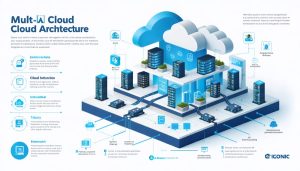
Cloud Resilience: How Leading Companies Prevent Costly Infrastructure Failures
Cloud resilience stands as the cornerstone of modern digital infrastructure, enabling organizations to maintain operational continuity even when faced with severe disruptions. In today’s construction and architecture landscape, where project data and critical applications must remain accessible 24/7, resilient cloud systems serve as the foundation for uninterrupted business operations.
Building resilient cloud architecture requires a strategic approach that combines redundancy, automated failover mechanisms, and distributed systems design. Just as construction professionals implement structural redundancies to ensure building …









